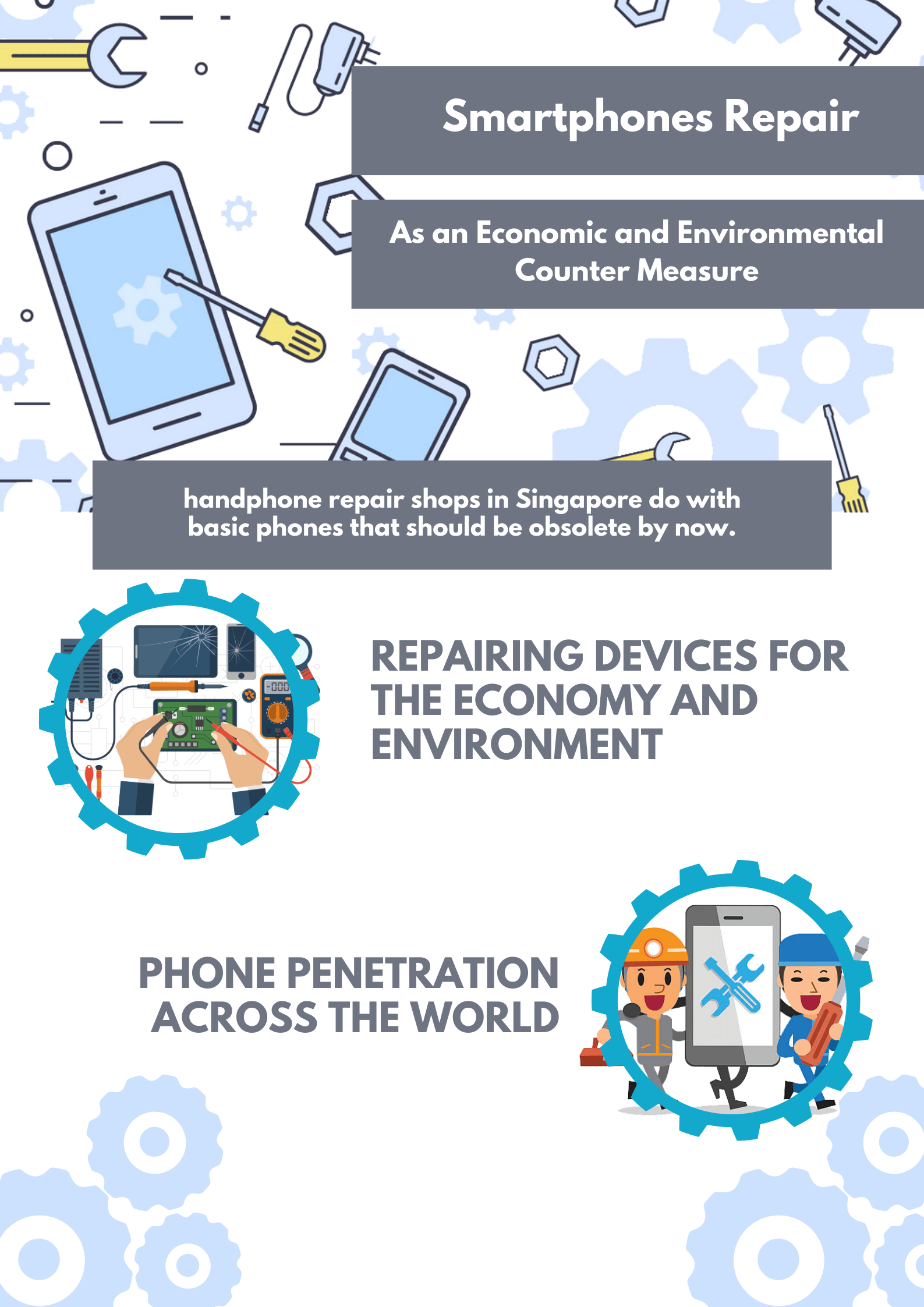Smartphones Repair As an Economic and Environmental Counter Measure
- By Melissa Jun
- •
- 26 Apr, 2020
- •

Amidst this profound diffusion of technology, extraordinary innovations are happening particularly in the fields of health, agriculture, and development. Because of smartphones and other devices, it has never been easier to communicate from even the most remote parts of the world. However, this new reach of technology isn’t limited to the social sphere and it isn’t always so positive. Within just one decade, the production and disposal of smartphones have had an enormous impact on both our environment and the widening gaps of social inequality around the world. At the same time, workers in manufacturing countries are experiencing slave-like conditions as they mine for minerals or work in production plants to assure that those with the means have the required unlimited supply of these technologies.
Fortunately, there are ways to correct the vicious cycle of consumption, waste, and injustice perpetrated by the use of smartphones in a global society. It is by going against the lifespan of a certain phone or device and making it last by repairing it the way handphone repair shops in Singapore do with basic phones that should be obsolete by now.
Repairing devices for the economy and environment
Repair of mobile phones fits with the vision of a circular economy in an urban context. Repair as a local loop and an inner cycle of a circular economy is significantly distinguished from relatively larger and also potentially regional and global loops, the outer cycles of remanufacturing and recycling activities of a circular economy. Local repair businesses in an urban context, on the other hand, extend the lifetime of mobile phones and reduce the need for virgin materials, which in theory results in environmental benefits.
In addition, local repair businesses like handphone repair shops in Singapore contribute to lower levels of waste electrical and electronic equipment in cities and increase maximum possible usage of mobile phones over time, along with supporting refurbishment, remanufacturing, and recycling activities. Globally, repair activities and repair shops can also be viewed as local contributors to the global development agenda, namely, the Sustainable Development Goals (SDGs), which were agreed upon by the 193 members states of the United Nations, and especially the target of reducing the adverse per capita environmental impact of cities, including by paying special attention to air quality and municipal and other waste management by 2030.
Repair activities constitute a business response to an economic opportunity, which complements civil society responses of product repair, and repair and resale activities of social enterprises. Locally, mobile phone repair activities such as phone screen repairs in Singapore also offer employment to those working in the country.
Phone penetration across the world
Concentrating on the historical and contemporary mobile phone technology, and its global-scale market, a hundred years ago Finnish inventor Eric Tigerstedt filed a patent for a pocket-size folding telephone with a very thin carbon microphone in 1917; in 2017 we observe that the number of mobile phone users is forecasted to reach 4.77 billion people around the world. In 2017, as many as 1.54 billion mobile phones were sold worldwide. In the Netherlands, mobile phone penetration rate reached 68.8% with 11.7 million users; in Poland, 66.5% with 25.6 mln users; while in China, its 51.7% penetration rate corresponds to 717.3 million users [10]. New generation mobile phones, especially smartphones with internet-enabled, feature-rich applications, are relatively expensive devices with a mid-range retail price between EUR 150 and 450.
Typically, these technological devices still come with relatively fragile screens (although improvements against fragility by manufactures are being introduced) or otherwise hard-to-replace components when/if they malfunction and/or require cosmetic corrections. These financial and technological constraints encourage consumers more frequently to turn to repair shops to rescue their devices which are still operable and to pursue less expensive alternatives compared to replacement and upgrading options.
Initially, mobile phone users turned to official brand shops and non-official shops for repair (people working from home) but, over time, independent repair shops were created, to which people could bring their phone for repair and special services, with the repairs being done quickly and at a far lower cost than like the LCD screen repairs in Singapore when the repair is done by the suppliers working for official brands. Helped by low entry barriers, these independent repair shops developed strategies that offered competitively, and also superior, customer value.
In conclusion
Today, smartphones are an inexorable part of our existence, a fact that undeniably true that people have been fixing broken smartphones and other mobile devices, and in doing so, reverse-engineer devices that can be updated and modified but aren't often overhauled due to consumer culture and warranty deals. It is inevitable that technicians learn how to rewire and redo phone damages, it resulted from a need that transformed even the economy and environment.
If you need help with your devices and gadgets and if you are looking for the cheapest handphone repair shop in Singapore, do not compromise your gadget by going to a hacker, let our experts help you.
Resource: